
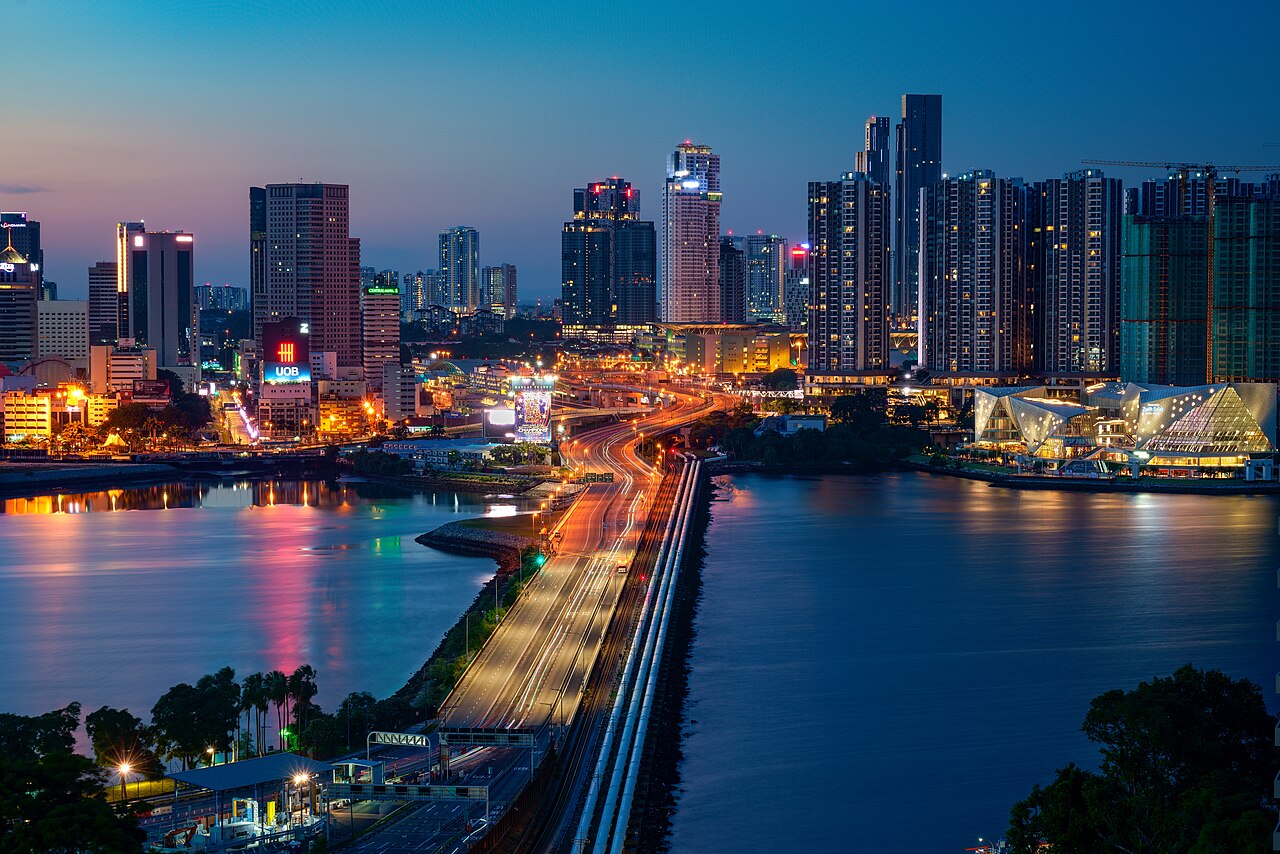
Singapore and Malaysia are two neighboring Southeast Asian nations with a deeply intertwined history and culture, yet they have evolved into distinct and independent states. Both were once part of the British Empire, with their paths diverging in 1965 when Singapore separated from the Malaysian Federation. Despite this political split, they share a similar multiracial populace of Malays, Chinese, and Indians, which has resulted in a rich blend of shared traditions, festivals, and, most notably, a love for similar cuisines like laksa and satay. However, Singapore has developed into a highly advanced, urbanized city-state with one of the world's highest GDP per capita, focusing on a knowledge-based economy, technology, and finance. In contrast, Malaysia, with its larger landmass and population, has a more diversified economy, rich in natural resources such as palm oil and natural gas, alongside its growing manufacturing and tourism sectors. Politically and economically, their relationship is a mix of cooperation and competition, with both countries maintaining close ties in areas like trade, defense, and tourism, while also addressing long-standing bilateral issues.
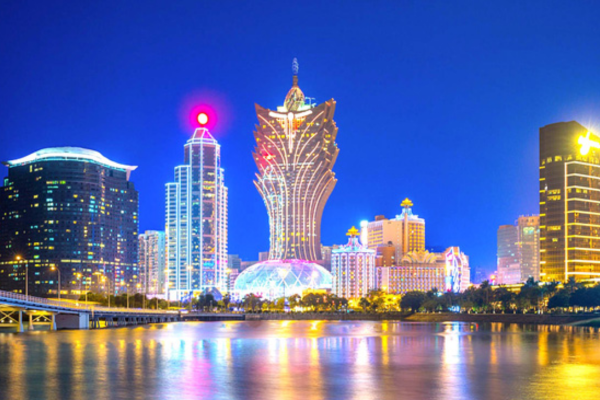
A tour of Macau is a captivating journey into a city that is a unique fusion of Chinese and Portuguese cultures, a blend of historic charm and modern extravagance. Your exploration would begin in the Historic Centre of Macau, a UNESCO World Heritage Site where you can walk the iconic Senado Square with its wave-patterned mosaic pavement and admire the stunning, Baroque-style façade of the Ruins of St. Paul’s Cathedral. A visit to the oldest temple in Macau, the A-Ma Temple, provides a tranquil contrast to the city’s vibrant energy. For breathtaking views, you can ascend the Macau Tower, where you can get a panoramic look at the cityscape and, for the adventurous, even try the world’s highest commercial bungee jump. Finally, no Macau tour is complete without experiencing the glittering “Cotai Strip,” a collection of massive, themed casino resorts like The Venetian Macao, which offers gondola rides along indoor canals, and The Parisian Macao, with its half-scale replica of the Eiffel Tower
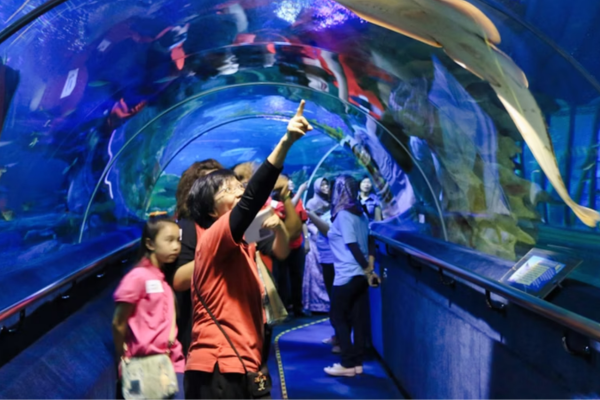
Situated beneath the Kuala Lumpur Convention Centre, Aquaria KLCC is a world-class oceanarium that offers an immersive and educational journey into the world’s aquatic ecosystems. Spanning 60,000 square feet, the facility is home to over 5,000 marine and land creatures from Malaysia and around the globe. The highlight of the tour is a 90-meter-long underwater tunnel with a moving walkway, where visitors are surrounded by a diverse array of sea life, including sand tiger sharks, stingrays, and majestic green sea turtles. Beyond the main tunnel, the aquarium features a variety of themed exhibits, such as “The Stream” with otters and “Weird & Wonderful” showcasing unique species like jellyfish and seahorses, all designed to provide a comprehensive and engaging look at the wonders of marine life

A visit to Merdeka Square, or Independence Square, is a journey into the heart of Malaysia’s history. Located in Kuala Lumpur, this significant landmark is where the country declared its independence from British rule on August 31, 1957. The square is a vast, well-maintained lawn dominated by one of the world’s tallest flagpoles, which proudly flies the Malaysian flag. It is surrounded by a collection of stunning colonial-era buildings, each with its own story, including the magnificent Sultan Abdul Samad Building with its distinctive Moorish architecture, the Royal Selangor Club, and the National Textile Museum. The square serves not only as a historical monument but also as a hub for major national events and celebrations, offering visitors a chance to witness a blend of Malaysia’s past and present.
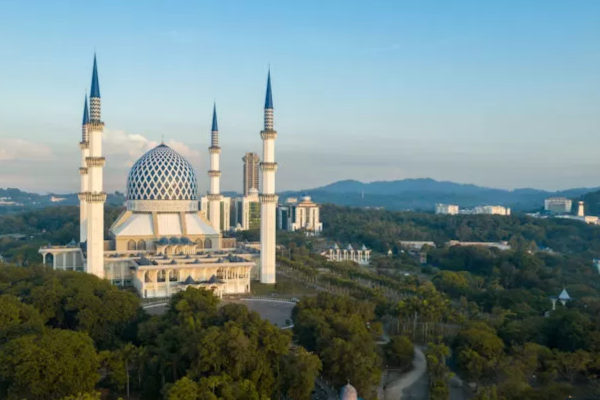
Masjid Negara, or the National Mosque of Malaysia, stands as a stunning architectural marvel and a significant symbol of the country’s independence and Islamic heritage. Designed with a bold, modern approach that blends traditional Islamic art, the mosque’s most striking features are its 73-meter-high minaret and a unique 16-pointed star-shaped concrete roof, which symbolizes the 13 states of Malaysia and the five pillars of Islam. Situated on 13 acres of beautifully landscaped gardens with reflecting pools and fountains, the mosque offers a peaceful sanctuary in the heart of bustling Kuala Lumpur. Visitors are welcome to admire the intricate geometric patterns and calligraphy adorning the interior and exterior, and guided tours are available for those interested in learning more about the history, architecture, and Islamic culture and traditions that the mosque represents.

Soar above Singapore’s cityscape and harbor on the Sentosa Island cable car ride, a journey that offers a unique and spectacular perspective of the Lion City. The system is comprised of two distinct lines: the Mount Faber Line and the Sentosa Line. The Mount Faber Line connects the mainland from Mount Faber Peak to Sentosa Island, providing breathtaking panoramic views of the city skyline, lush greenery, and the bustling Keppel Harbour. Once on the island, the Sentosa Line transports you over the island’s key attractions, including Universal Studios Singapore, S.E.A. Aquarium, and Siloso Beach, offering a convenient and scenic way to hop between different leisure spots. This aerial adventure is not just a mode of transport but an attraction in itself, providing a tranquil, bird’s-eye view of Singapore’s urban beauty and natural landscapes, both by day and night.
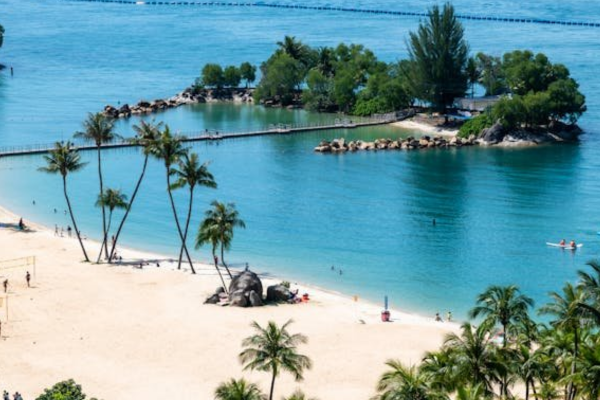
A tour of Sentosa Island, known as “The State of Fun,” is an action-packed escape from the city, offering a diverse range of attractions for every type of visitor. Connected to the mainland by a cable car, monorail, and causeway, the island is a playground of entertainment and natural beauty. Visitors can experience the thrills of Universal Studios Singapore, explore the underwater world at the S.E.A. Aquarium, or get their hearts racing on the Skyline Luge and MegaZip. Beyond the blockbuster attractions, Sentosa also boasts three pristine beaches—Siloso, Palawan, and Tanjong—perfect for sunbathing, water sports, and beachside dining. The day often concludes with the spectacular “Wings of Time” night show, a mesmerizing display of water, fire, and light that brings a fantasy tale to life, leaving guests with a memorable finale to their island adventure.
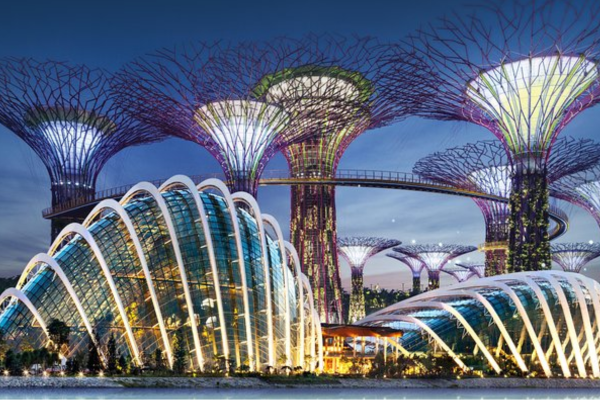
A tour of Singapore’s Cloud Forest offers an otherworldly and refreshing experience, transporting visitors to the misty, cool-moist climate of a tropical mountain. The highlight of the conservatory is a breathtaking 35-meter-tall indoor waterfall, which cascades down a lush, man-made mountain covered in a diverse array of plants typically found at high altitudes. Guests can ascend the mountain via a lift and then descend along two elevated walkways, the Cloud Walk and Tree Top Walk, which wind around the structure’s perimeter. This allows for up-close views of rare orchids, carnivorous plants like the Venus flytrap, and various epiphytes that cling to the “mountain” without soil. The tour is not only a visual feast but also an educational journey, with exhibits that highlight the importance of biodiversity and the fragile ecosystems of cloud forests, making it a unique blend of natural wonder and environmental awareness.

A tour of Singapore’s Buddha Tooth Relic Temple and Museum is a deeply spiritual and culturally rich experience, located in the vibrant heart of Chinatown. The temple is a magnificent sight, designed in the architectural style of the Tang Dynasty, with a striking red facade and elaborate decorations. The main attraction is the sacred relic itself, believed to be a tooth of the historical Buddha, which is housed in a massive stupa on the fourth floor, crafted from 320 kilograms of gold. While only monks are permitted into the inner chamber, visitors can view the stupa from a public viewing area. Beyond the main relic, the temple is home to several floors of museums and exhibits showcasing Buddhist artifacts and history from across Asia, as well as a tranquil roof garden featuring a large prayer wheel and a beautiful pagoda, offering a peaceful sanctuary from the bustling city below
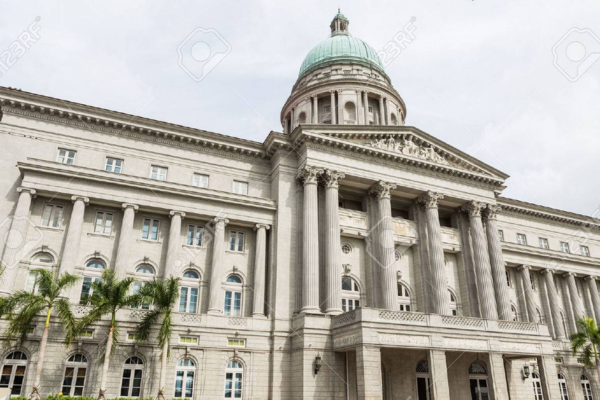
A tour of the Civic District in Singapore, which includes a drive-by of the historic City Hall, is a journey into the heart of the nation’s political and cultural history. While the building itself is no longer a functioning city hall, having been integrated into the National Gallery Singapore, it remains a landmark of immense significance. As you pass by, you can appreciate its grand neoclassical architecture and learn about its pivotal role in Singapore’s journey to independence. It was on these very steps that the Japanese officially surrendered to the British in 1945, and where Singapore’s first Prime Minister, Lee Kuan Yew, was sworn into office in 1959. The tour of this area provides a compelling narrative, showcasing how a colonial administrative building became a symbol of national sovereignty and a cornerstone of modern Singapore.

A tour of Singapore’s Merlion Park is an iconic experience, placing visitors at the heart of the city-state’s most enduring symbol. The main attraction is the majestic 8.6-meter-tall statue of the Merlion, a mythical creature with a lion’s head and a fish’s body, which spouts a steady stream of water into Marina Bay. This hybrid figure represents Singapore’s dual heritage: the fish body symbolizes its origins as an ancient fishing village known as “Temasek,” while the lion head is a nod to its modern name, “Singapura,” or “Lion City.” From the park, visitors are treated to a stunning panoramic view of the modern Singapore skyline, including the Marina Bay Sands, the Esplanade, and the Singapore Flyer. It’s not just a photo opportunity; it’s a chance to connect with the nation’s history and to appreciate the blend of tradition and modernity that defines Singapore.